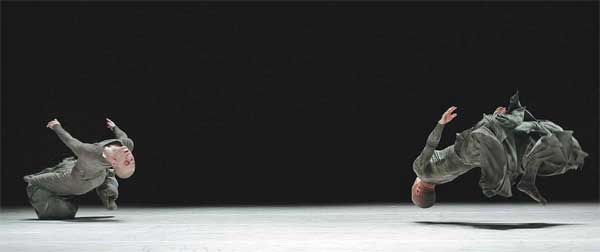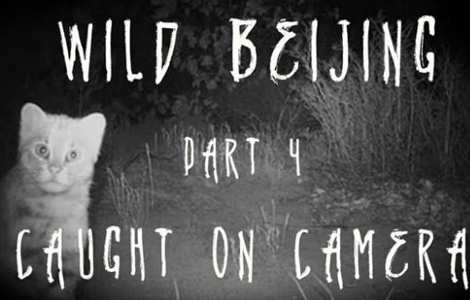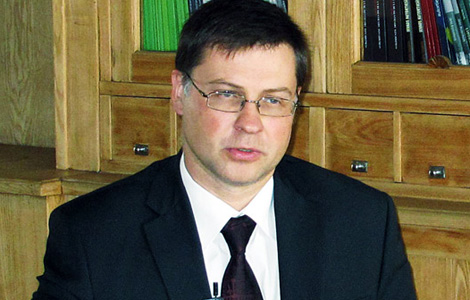Tao of dance
Updated: 2013-07-18 22:52
By Chen Nan (China Daily)
|
|||||||||||
Tao Ye, the artistic director of Tao Dance Theater, reaches for a cigarette. After a couple of hours on the dance floor, he is soaked to the skin and ready for a break. He flops onto the floor, glad for a respite after hours of dancing in the hot humid summer day. The 28-year-old choreographer is rehearsing his works, named after Arabic numerals, 2 and 4, part of the performance to be staged at the National Center for the Performing Arts.
What challenges him the most is that this is the first time his works are being premiered in his home country.
The five-year-old Tao Dance Theater is known for its unconventional works and has been touring the world since it was founded. Despite the acclaim he has won abroad, Tao says he is unsure about the feedback he will get here.
"We haven't built a connection with audiences in China," he says. "I guess the outcome might not be good because our performances break with conventional aesthetics.
"Though the number of Chinese watching modern dance has grown fast in the last few years, I don't think they have opened their hearts and communicated with the works yet," Tao continues.
"For us, the shows at the NCPA will be a litmus test to see how the audience will react to our works and how advanced the modern dance environment in the country has become."
Widely regarded as one of the most progressive contemporary choreographers in China, Tao is focused on revealing himself in movements and establishing his own order in dance.
His two works, 2 and 4, created years ago and staged hundreds of times around the world is named after digits because "I don't want to give my works a certain name with a few words. Language can deceive and limit the imagination. So I used numerals, simple and free."
The duet, simply named 2, was created in 2005. It shows Tao and co-choreographer Duan Ni repeating rubbing their bodies against the floor. Over a year, they brainstormed ideas on the work and explored the possibilities of using their bodies.
"The whole year was torturous. You couldn't imagine. We couldn't think of any ideas and cried," recalls Tao. "Our clothes were torn because of the constant rubbing on the floor. It was a confrontation between the floor and us."
For Tao, art is very personal and the only way to get the right move he wants is by listening to his heart.
The same philosophy applies to the work 2 and the dance 4, which he created for his dance theater.
In the beginning, Tao wanted to show the techniques of his dance theater, which had four members then. However, as he added his ideas into the work, the quartet of dancers wearing masks throughout has expanded beyond techniques into a display of the individuality of the dancers' body language.
Beijing-based folk-punk musician Xiao He composed music for 2 and 4 — a collaboration that Tao describes as both painful and inspiring.
"We lived together for two months to work on the show. He is very emotional and locked himself in the washroom to compose. Just when I thought I found the wrong person to work with, he gave me a great piece of music at the last minute. When I look back, it seems like a miracle," Tao says.
"Putting my choreography and his music together was like giving birth to a new baby, with DNA from both of us."
Both works have been staged frequently abroad, including renowned venues like the Lincoln Center for the Performing Arts and the Sydney Opera House, and have won critical acclaim.
The New York Times described it as "extraordinary" and the Financial Times called the work "a force of nature".
Tao says that he knows many in China complain that modern dance is too abstract to understand. But, he wants to ask: "Why do you want to understand it?"
"The dance was born out of my emotion at a certain moment. You won't understand it because you are not me. You just feel it your own way. Whatever it is, you are part of the dance," he says.
Born in Chongqing, Tao realized his passion for dance at 12 and later learned classical Chinese and ethnic dances at Chong-qing Dance School. He was with both the Jin Xing Dance Theater and Beijing Modern Dance Company before he founded his dance theater in 2008.
His theater's first show was at a gallery in Nanluoguxiang, a hutong in downtown Beijing.
Tao's work Do Beautify intended to use bodies to connect with space, which shocked audiences and was met with mixed comments.
In the early days, he only had two dancers, Duan Ni and Wang Hao. The hard days inspired him to create Weight X 3.
Money was a big issue back then. He had to spend five to six hours commuting between Beijing and Zhuozhou city in Hebei province, where he had a cheap studio.
Now with six dancers in his theater, Tao says that he is having his best days ever.
In Tao's studio, which has walls painted in red and black, he doesn't have mirror on walls because he wants his dancers to feel their bodies from the inside.
"To create a good work, I have to endure solitude, starvation and sleepless nights. But I am okay with all that. The task is to create good work from the heart," he says.
"We are both nervous and excited about the China premiere," says Alison Friedman, founder and director of the arts management company Ping Pong Productions in Beijing, which is Tao Dance Theater's international management and producing company.
"We've been to so many places around the world and I am not worried because no matter how the audiences and critics respond, I know they are going to respect it. But it's a big question mark in China."
Friedman helped Tao arrange the China premiere at NCPA two years ago and she says that it's ridiculous for Tao Dance Theater to not perform in China.
"No matter what the outcome is, it's just the beginning," she says. Though the modern dance scene in China is growing, she says, it has not reached its prime as yet.
"The audiences need more diversity. They are looking for something new and different, and not just out of curiosity," she says.
Related Stories
No song and dance but fun 2013-07-18 05:44
Copper Drum Dance 2013-07-10 15:39
Dance camp helps migrant kids get training 2013-07-03 09:29
Dance becomes popular stress relief 2013-06-28 10:39
A blending of dance and music 2013-05-24 15:20
Today's Top News
Bacteria may extend longevity, study finds
GSK finance head not allowed to leave
Putin puts US relations above Snowden
DPRK demands release of free seized ship
Bomber as rock star? Rolling Stone cover outrage
7.75% growth possible in 2013
China, Belarus commit to plans
More use smartphones to access the Internet
Hot Topics
Lunar probe , China growth forecasts, Emission rules get tougher, China seen through 'colored lens', International board,
Editor's Picks
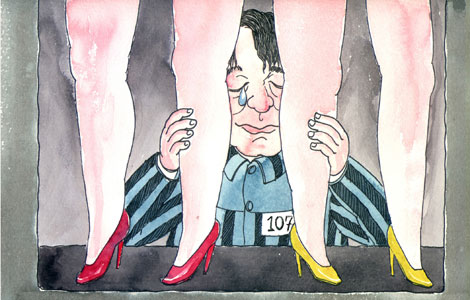
|

|

|

|

|
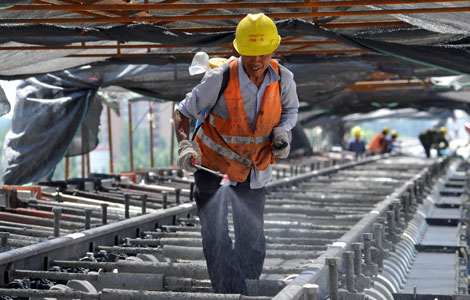
|
